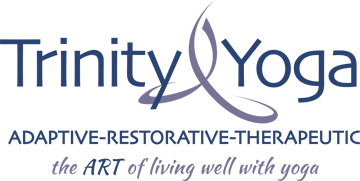The second week of the Universal Yet Personal Program at KYM has passed. A weekend at the nearby beach town of Mahallapurum helped clear my mind (and my sinuses) and somehow the city of Chennai is seeming easier to endure. Or perhaps I am mastering that tricky niyama, Samtosha!Asana practice at KYM is much different than the vigourous practice to which I am accustomed. I will admit that during the first few days I was somewhat disappointed. A voice whispered “my grandmother could do this”. But as I mentioned before each day built upon the foundation and it is obvious that classes have been designed with great care and intention. Just as we were warned against, I think I may be so eager to learn new and spectacular things that I am missing the subtle yet profound lessons being taught. Let the breath guide the movement…
AT KYM we practice classical postures in dynamic repetition, often changing the breath ratio. For example, we might practice trikonasana: exhale down, inhale up on each side (3 x), exhale down, hold for 1 breath, inhale up on each side (1x), exhale down, hold for 2 breaths, inhale up on each side (1x), exhale down , hold for 3 breaths, inhale up on each side (1x). Or sitting in padmasana: inhale 2 exhale 4, 4:8, 5:10 and so on. For those interested I can explain more or share my daily lesson plans.
Aside from children’s classes and special programs such as the one I am attending, KYM does not offer group classes for adults. Perhaps this explains why we are given very little description, correction or modification in our group asana class (?). Generally an adult student meets with a consultant and then is assigned to a teacher who gives a program customized to the student’s goal, ability, age, physical and emotional considerations etc. (Next week I have a private consultation, which I will write about)
It seems that most students who come to the mandarim come for therapeutic reasons. The most valuable lessons I have experiences (and the pace is picking up so there have been many) have taken place in the Applications of Yoga class. Krishnamacharya was a firm believer in the therapeutic and healing potential of yoga and citkitsu, or therapy, is one of the most vital components at KYM. Kaustub Desikachar has said that this class is unlike any other in the world. Basic principles taught in this course are to observe the patient as a whole (holistically), practice ahimsa working towards a realistic goal and the impact of sradyha (faith and positive attitude), ie. healing from within. We have learned to observe bodies for misalignments or deviations and then develop a program to reduce pain, increase flexibility and build strength.
During the week our teacher, Saraswati has introduced us to several KYM students and we have learned how yoga therapy has helped ease their pain and often prevent them from surgery that was deemed necessary by
allopathic doctors. Currently KYM is involved in extensive research involving yoga and epilepsy.
Another week of study over, I plan to find enlightenment this weekend. 😉 I’m travelling to the holy town of Tiruvannamalai to visit the ashram of Sri Ramana Maharishi, the great guru of Self-Realization. Who am I?
Blessings from India.
